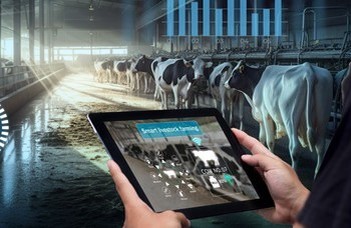How can artificial intelligence aid industrial animal husbandry?
What is the aim of the Institute of Electrical and Electronics Engineers Cognitive Mobility Conference?
The IEE CogMob investigates the entangled combination of research areas such as mobility, transportation, vehicle engineering, social sciences, artificial intelligence, and cognitive infocommunications. The primary aim of CogMob is to provide a holistic view of how mobility in a broader aspect can be understood, described (modelled), and optimised as the blended combination of artificial and natural/human cognitive systems. It investigates what kinds of new cognitive capabilities develop in the emerging CogMob system. The engineering applications represent one of the focus areas of CogMob.
How long have you been using AI in agriculture and what are the main results so far?
At the ELTE Faculty of Informatics, we have been engaged in agricultural informatics since 2016. As an agricultural engineer, I was responsible for the development of livestock farming technology at industrial-sized pig and poultry farms for nearly ten years. During this period, I familiarised myself with the practical experts’ way of thinking, which has been of great assistance in the planning and implementation of our projects.
Digitisation is the next step in modernising the production of animal products,
increasing the economic and ecological efficiency of production, and supporting the sustainable production of animal products.
The so-called precision livestock farming (PLF) technologies allow us to collect digital data, compile large-scale datasets, and analyse factors affecting the production process and their correlations at an individual level. This is where artificial intelligence and machine learning methods come in. In addition to numerical data, we also interpret camera images, videos, and sounds, thus cutting down on feed and energy consumption, and thereby reducing the harmful effects on the environment as well as optimising human resources that are increasingly difficult to secure in industrial animal husbandry.
How does the paper that has recently received an award broaden existing knowledge?
I was very happy to have the opportunity to submit a study and deliver a presentation at the IEEE CogMob International Conference. In my opinion, it was a brave and forward-looking step on the part of the chief organisers to consider – as they put it – “cattle as a mobile object”. Based on the feedback we received, it was possible to arouse the interest of the participants and give them insight into a completely new area.

Industrial animal husbandry is a rather complex phenomenon, which includes the keeping of the most important farmed animals in closed conditions as well as outdoors in pastures. Consequently, the circumstances of data collection are highly heterogeneous, and PLF technologies must adapt to them. In our publication, we analysed the mobility of bovine herds reared in pastures in Hungary and its demonstrable patterns. In this form of animal husbandry, the livestock keeper has little opportunity to observe the animals on a daily basis. The success of meat production partly depends on the positive development of the health status and fertility indicators, the data of which were detected and evaluated with the help of sensors placed on the animals’ bodies and the deployed meteorological stations.
How can the results presented in the publication be applied in practice?
PLF technology allows the animal keeper to obtain real-time, authentic, and reliable information
about the condition of the herds moving freely in the vast grazing area. If they notice any anomalies, they can intervene immediately, which increases the security of meat production and thus has a positive impact on profitability.
What can ELTE students learn about this topic? Is it possible for them to get involved in research?
Of course, we welcome all those who are interested. A few years ago, we launched the Agricultural Informatics course in Hungarian and English at the Faculty of Informatics. The course is attended by more and more students, some of whom have already chosen their thesis topic in this field. We strive to run the course every semester, where the students can learn authentic and interesting information from guest lecturers coming from various fields of the food production sector – not only pertaining to animal husbandry. Those students who would like to get engaged in it more deeply may choose a topic for their Students’ Scholarly Circle paper or master’s thesis topic in this field. Due to the interdisciplinary character of the subject, the students are guided in their research by a teacher who is knowledgeable in agriculture as well as by an IT expert. We have excellent relations with the faculties of agriculture at several domestic universities that are open to such cooperation.
In what direction do you wish to continue your research?
There are still countless possibilities to solve practical problems and broaden the application of solutions. It is an interdisciplinary subject bringing together experts and researchers working in the fields of animal husbandry, veterinary medicine, engineering, and information technology – in most cases – with the involvement of the farmer. For this, each party has to learn the others’ subject to some extent in order to find some common ground. In a wider context, this research also has social and ecological implications, which creates the possibility of involving even more disciplines. The work of a PhD student, mentored by me together with my colleague Sándor Kovács, a mathematician, opens up interesting perspectives. He is investigating the application of mathematical models in precision animal husbandry, which has also attracted the attention of some researchers at the University of Leuven.

